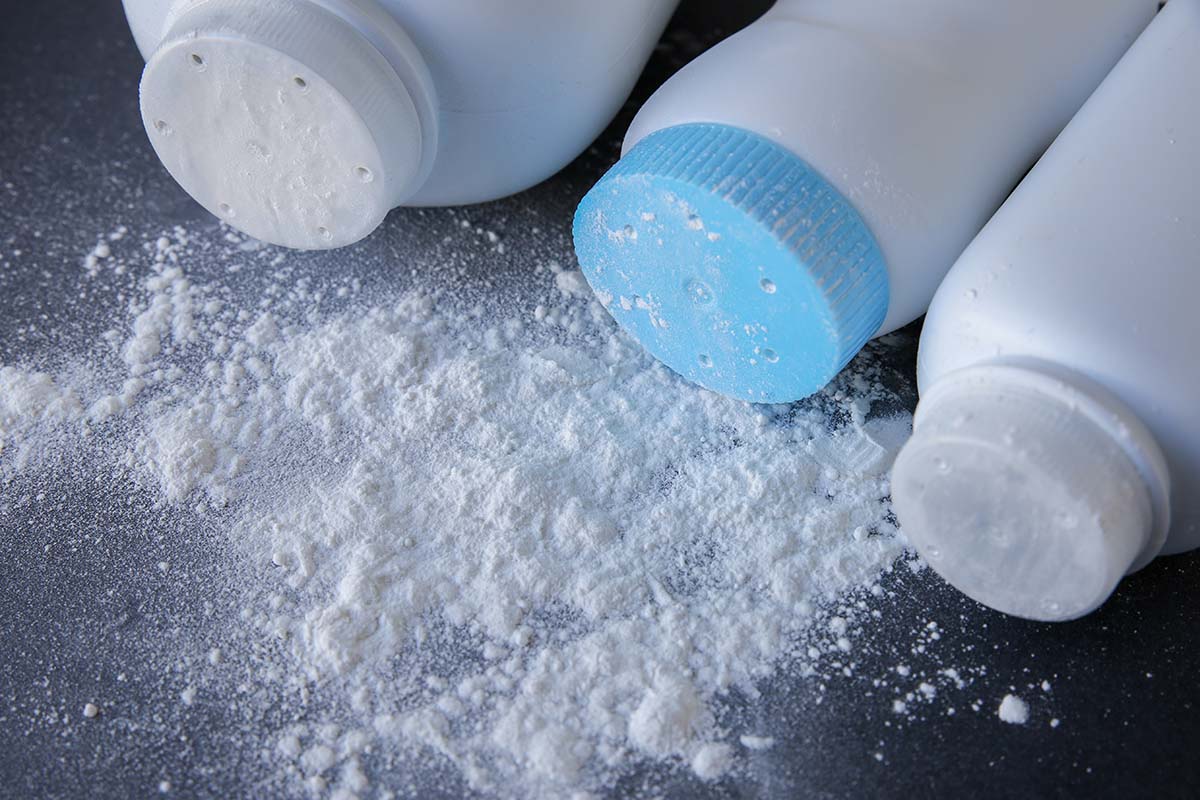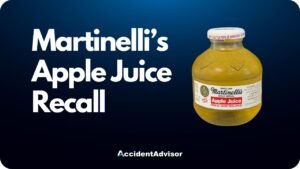A talcum powder lawsuit claims that there is a connection between the use of talcum powder products and certain cancer diagnoses. The main claim is against Johnson and Johnson for asbestos contamination in their baby powder products.
Forming a successful Johnson and Johnson talcum powder lawsuit can be a complicated process involving the history of the cases against the company as well as the severity of your claims. Filing a Johnson and Johnson baby powder lawsuit also requires knowing the statute of limitations in your state, the history of the claims, and the filing process.
An experienced personal injury attorney can help you create a winning Johnson and Johnson lawsuit. However, we created this guide to help you navigate the steps whether or not you decide to get representation.
Table of Contents
- What is Talcum Powder?
- What is Talcum Powder Used For?
- What Products Contain Talcum Powder?
- Does Johnson and Johnson Baby Powder Still Contain Talcum Powder?
- Johnson and Johnson Baby Powder Lawsuit
- Talcum Powder Lawsuit Claims
- What is the Average Compensation for a Talcum Powder Lawsuit?
- Who Qualifies for a Talcum Powder Lawsuit?
- What is the Talcum Powder Lawsuit Statute of Limitations?
- How to File a Talcum Powder Lawsuit?
- Summary
What is Talcum Powder?
Talcum, a product made from the mineral compound talc, absorbs moisture in powder form. This compound, which is made mostly of magnesium and silicon, has been widely used in cosmetic products since its commercialization in 1894, especially as baby powder. The first talcum powder recipe was patented by Johnson and Johnson at that time.
In 1976, the CTFA or Cosmetic, Toiletry, and Fragrances Association issued restrictions on talcum powder after it became known that some products contained detectable amounts of asbestos.
Since talc and asbestos are both minerals that occur naturally, the dangers of cross-contamination were underestimated for decades. However, asbestos is a carcinogen when inhaled and is linked to major health concerns. Often mined simultaneously, the two compounds have become toxically interconnected, leading to talcum powder lawsuits.
What is Talcum Powder Used For?
Talcum powder’s ability to absorb moisture has made it a popular baby powder, facial makeup, and rash remedy. Since asbestos can cause cancer when inhaled, talcum contaminated with it is highly dangerous in powder form, even when used as directed.
A Johnson and Johnson talcum powder lawsuit focuses on the lab studies of individual products and compares them to the cancer risks of different groups of users. Correlations between talcum powder use and statistically abnormal cancer diagnoses can be used to present a baby powder lawsuit in context.
Since talcum powder is used for such intimate products, often by parents and infants, a Johnson and Johnson lawsuit is a serious undertaking.
What Products Contain Talcum Powder?
Talc is a widely used compound in many types of products. The focus of nearly every Johnson and Johnson talcum powder lawsuit is on their line of baby powder. However, the products that contain it are numerous and include:
- Baby powder
- Facial makeup
- Body powder
- First aid
- Paint
- Rubber
- Toys
- Roofing
- Insecticide
- Crayons
- Ceramics
- Paper
- Chewing gum
There are more products than these. Since being patented in 1894, talcum powder has become widely used as a moisture-absorbing compound in many industries. Since talc is not harmful on its own, the dangers of cross-contamination with asbestos mines were not properly evaluated for decades.
Does Johnson and Johnson Baby Powder Still Contain Talcum Powder?
The Johnson and Johnson talcum powder lawsuit trend convinced the company to participate in recalls of talcum products tested by the FDA in 2019 to contain trace amounts of asbestos. These included Johnson and Johnson baby powder.
In 2020, thousands of baby powder lawsuits began to be filed against Johnson and Johnson alleging that they knew about the presence of asbestos in their baby powder and the links to cancer. This prompted Johnson and Johnson to begin the move towards talcum-free products.
With over $4 billion in paid settlements already, Johnson and Johnson has stated that it will have replaced all talcum-based products with cornstarch variants by 2023. As of now, Johnson and Johnson products on the shelves could still contain talcum powder.
Johnson and Johnson Baby Powder Lawsuit
In 2018, the first guilty verdict was given in a Johnson and Johnson talcum powder lawsuit. In 2019, the FDA released information on the dangers of talcum contaminated with asbestos, which prompted more lawsuits from J&J customers. In total, over 40,000 people have filed a Johnson and Johnson baby powder lawsuit, totaling over $4 billion in damages.
The biggest cases have been a $2.11 billion settlement in July 2018 in Missouri, a $325 million settlement in New York (May 2019), and a $117 million settlement in New Jersey (April 2018). Other settlements totaling in the billions have been handed down by juries but lowered or rejected in appeals by Johnson and Johnson.
Talcum Powder Lawsuit Claims
A Johnson and Johnson talcum powder lawsuit argues that there is an identifiable connection between the use of the company’s talcum powder and certain cancers. These include ovarian cancer, fallopian tube cancer, and peritoneal cancer. Some have even claimed mesothelioma, a condition caused by inhaling asbestos, can be caused by inhaling the contaminated baby powder.
Some studies show that regular use of Johnson and Johnson talcum products can raise risks for these cancers by as much as 33%. This makes it important to recognize the potential symptoms of the conditions caused by contaminated products if you hope to file a successful Johnson and Johnson talcum powder lawsuit.
Remember that these symptoms should be persistent, and they warrant a visit to a doctor. They include bloating, pelvic pain, abdominal discomfort, a loss of appetite, frequent urination, fatigue, back pain, menstrual changes, painful intercourse, and unexplained weight loss.
If a doctor suspects ovarian cancer or other serious illnesses, they will conduct tests to determine if cancer is present and what stage it is in. Ovarian cancer, the most reported in every baby powder lawsuit, has four stages. The first is when the cancer is most treatable as it is still local to the ovaries. It spreads to the rest of the pelvis in stage two, including the bladder and uterus. In stage three, cancer spreads to lymph nodes and the abdomen. By stage four, it is present in distant organs like the liver.
What is the Average Compensation for a Talcum Powder Lawsuit?
Due to the severity of the conditions caused by contaminated talcum powder, a Johnson and Johnson baby powder lawsuit has a very high average compensation amount of around $4.4 million per plaintiff. Many settlements are lower than this (around $100,000) while others can be in the hundreds of millions.
Compensation amounts depend heavily on the injuries sustained by the plaintiff as well as the strength of their case. This is why an experienced personal injury attorney can be the difference between a below-average and above-average settlement. In your baby powder lawsuit, they will know the records that need to be procured, the evidence that needs to be filed, and the authorities whose reports can make a difference in your case.
Who Qualifies for a Talcum Powder Lawsuit?
Not everyone who used a Johnson and Johnson product and who was later diagnosed with cancer qualifies to file a Johnson and Johnson lawsuit. The main products that are the subject of the lawsuit include J&J baby powder and shower-to-shower powder. The plaintiff must have used these products continuously for at least four years and then later have a confirmed diagnosis of ovarian cancer, mesothelioma, or invasive fallopian tube cancer.
The cases have been slow to recognize other types of potential cancers resulting from contaminated talcum powder. They are also strict about the four year-minimum on usage, as well as certain other restrictions.
For example, plaintiffs with a genetic disorder such as the BRCA 1 or BRCA 2 genes, which predisposes them to be at risk for ovarian cancer, cannot file a Johnson and Johnson talcum powder lawsuit. A positive biopsy must reveal the presence of talcum powder. The cancer diagnosis also must be confirmed after 2005.
What is the Talcum Powder Lawsuit Statute of Limitations?
The statute of limitations in a personal injury case is the time a plaintiff has to file their claim. The clock starts ticking beginning at the injury date or the date that the connection between your injury and the product was discovered. If you are claiming that someone was killed by the use of talcum products, the date of their death is the start of the clock on the statute of limitations.
The statute exists to protect defendants from cases for crimes committed decades ago as well as protect the legal system from cases that last for years due to outdated evidence. The statute differs between states, however, and even differs between personal injury and wrongful death cases.
On average, the statute of limitations in most states is around 2 years, but it can be more or less. In Florida, the statute is 4 years while in California the statute is 1 year. Check with your state’s guidelines to know how long you have to file your case.
How to File a Talcum Powder Lawsuit?
Knowing the statute of limitations in your state is the first step to filing a Johnson and Johnson lawsuit. This will tell you how long you have to get everything together. Next, you need to figure out the kind of suit you are filing, whether a personal injury suit for your diagnosis or a wrongful death suit for a loved one.
Next, you need to start gathering evidence to create a timeline for the court. This includes proof of purchases of Johnson and Johnson talcum powder products as well as medical records confirming your diagnosis. Since cases are restricted against those with certain genetic disorders, you may need to get genetic testing.
Summary
Over 40,000 lawsuits have been filed against Johnson and Johnson so far for injuries related to the use of talcum powder products contaminated with asbestos, a known carcinogen. Plaintiffs have been compensated anywhere between $100,000 and $2 billion for confirmed diagnoses of ovarian cancer as well as the wrongful deaths of family members.
As the use of talcum powder dates back centuries, the cases have strict guidelines on the kinds of diagnoses that are an acceptable basis for a case as well as the timeline for those diagnoses. Combined with different statutes of limitations in each state, this creates a potentially complex timeline for anyone hoping to file a Johnson and Johnson talcum powder lawsuit.
This is why a personal injury attorney can help you navigate the process of filing, including managing your personal timeline, gathering the right evidence, and filing a winning case.

Rocky Horton
Author
Rocky Horton is a health and safety expert from Chapel Hill, NC. He is the founder of AccidentAdvisor and has been featured in Forbes, Bloomberg, and other publications. Learn more.













